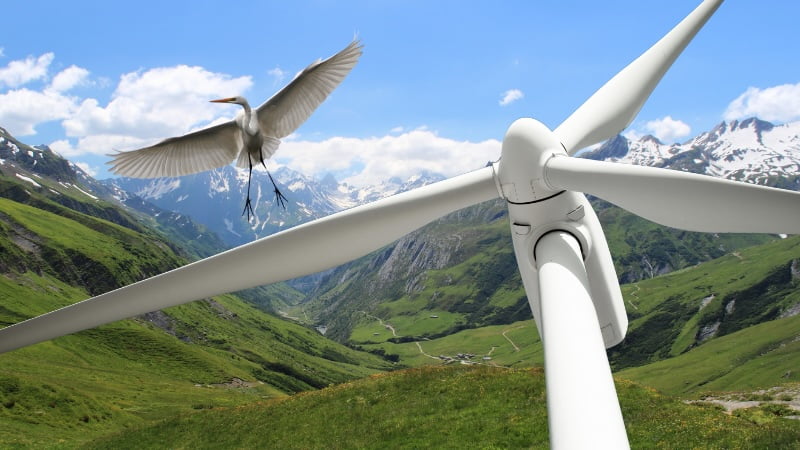
Although wind turbines are a popular source of renewable energy, they pose a danger to birds. A collision radar is now intended to protect the animals in the Swiss Alps from death by automatically stopping the rotors of the wind turbines when necessary.
The expansion of wind energy is one of Germany's greatest hopes when it comes to meeting climate targets. But as sustainable as the generation of electricity through wind farms is, they pose an immense danger to birds. Above all, because wind turbines are often built too close to one another, various bird species are falling behind.
“The risk of birds and bats having an accident on a rotor is primarily influenced by the location,” a NABU study has already determined in the past. Various protective measures such as the “New Heligoland Paper” are intended to reduce the risk to birds. But the nature conservation organization is not the only one committed to protecting species.
Wind turbines stop automatically when birds fly towards them
The operators of a wind farm in the Swiss Alps are also making efforts to protect the birds. To this end, the Gotthard wind farm has been using anti-collision radars for some time. These can detect flocks of migratory birds crossing the Gotthard Pass.
With an average rotor speed of up to 400 kilometers per hour, any collisions are usually fatal. However, if the birds come close to the collision radar, the rotors stop automatically.
In order to check the effectiveness of the bird protection radar, PESG AG (Parco eolico del San Gottardo SA) began corresponding studies in 2021. In a recent report, wind farm operator AET (Azienda Elettrica Ticinese) announced that there were already 654 hours in 2023 in which the wind turbines were stopped due to radar interventions. This corresponds to an average of 130.8 hours per wind turbine.
Patrols search for dead birds
Monitoring takes place during migration periods between March and June and between August and November. During these periods, the wind farm carries out regular patrols to find and count dead birds at the foot of the five wind turbines that make up the farm.
The results of each patrol are processed based on a statistical model that makes it possible to determine the collision rate. The data available so far relate to five migration seasons between autumn 2021 and autumn 2023, with a total of 73 searches.
The rate calculated based on the preliminary results is around ten collisions per year and per wind turbine. This number is within the agreed limit from the planning phase of the project, according to AET. This proves the effectiveness of the radar. The publication of the study, which includes all the data collected, is planned for autumn 2024.
Also interesting:
Source: https://www.basicthinking.de/blog/2024/06/05/vogelschutzradar-voegel-windraeder/


